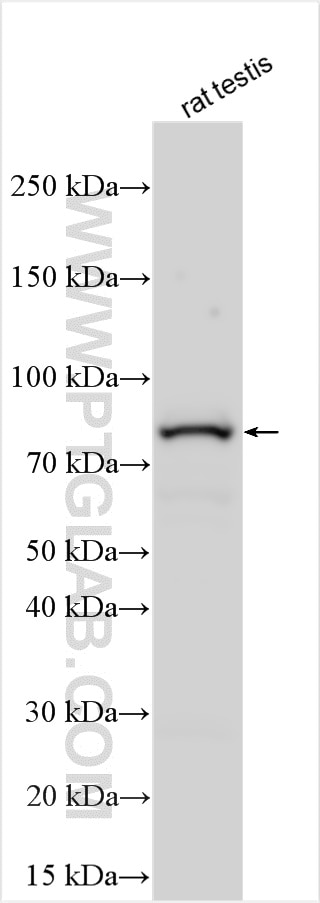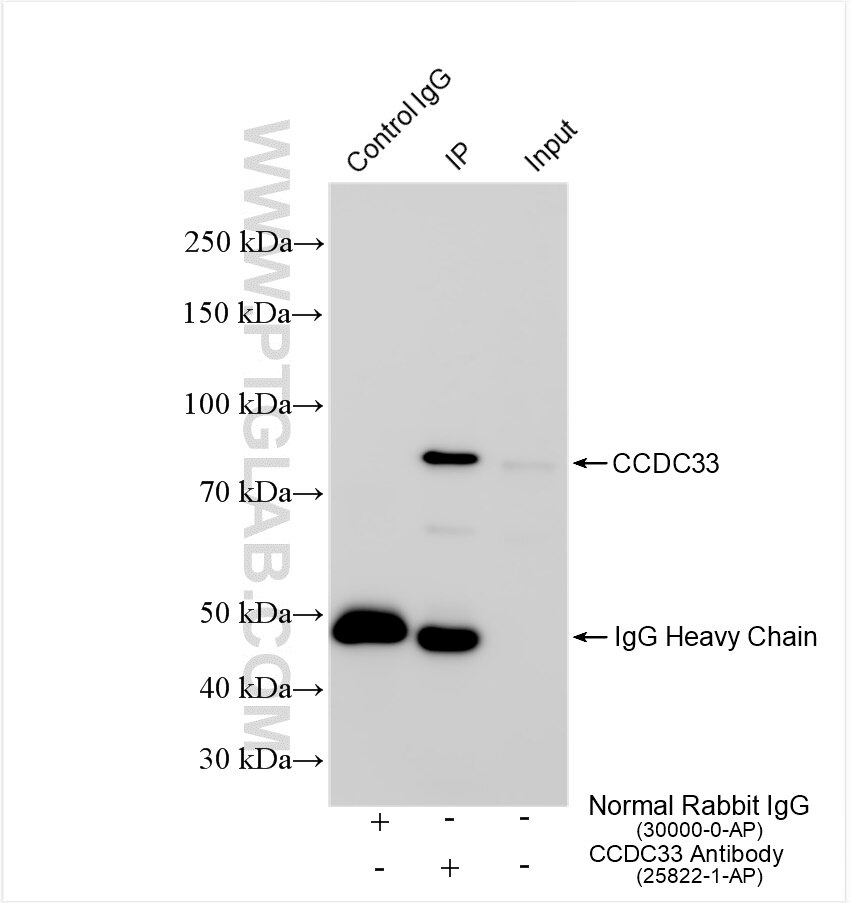Tested Applications
| Positive WB detected in | rat testis tissue |
| Positive IP detected in | mouse testis tissue |
Recommended dilution
| Application | Dilution |
|---|---|
| Western Blot (WB) | WB : 1:500-1:2000 |
| Immunoprecipitation (IP) | IP : 0.5-4.0 ug for 1.0-3.0 mg of total protein lysate |
| It is recommended that this reagent should be titrated in each testing system to obtain optimal results. | |
| Sample-dependent, Check data in validation data gallery. | |
Product Information
25822-1-AP targets CCDC33 in WB, IP, ELISA applications and shows reactivity with human, mouse, rat samples.
| Tested Reactivity | human, mouse, rat |
| Host / Isotype | Rabbit / IgG |
| Class | Polyclonal |
| Type | Antibody |
| Immunogen | CCDC33 fusion protein Ag22893 Predict reactive species |
| Full Name | coiled-coil domain containing 33 |
| Calculated Molecular Weight | 958 aa, 107 kDa |
| Observed Molecular Weight | 85 kDa |
| GenBank Accession Number | BC025689 |
| Gene Symbol | CCDC33 |
| Gene ID (NCBI) | 80125 |
| Conjugate | Unconjugated |
| Form | Liquid |
| Purification Method | Antigen affinity purification |
| UNIPROT ID | Q8N5R6 |
| Storage Buffer | PBS with 0.02% sodium azide and 50% glycerol, pH 7.3. |
| Storage Conditions | Store at -20°C. Stable for one year after shipment. Aliquoting is unnecessary for -20oC storage. 20ul sizes contain 0.1% BSA. |
Background Information
The human CCDC33 gene was reported to encode a cancer/testis (CT) antigen, which is located on 15q24.1, spans a region of 99.8 kb, and consists of 20 exons (PMID: 28639886). CCDC33 is predominantly expressed in the testis and undergoes alternative splicing to produce at least 5 different transcripts (37kda, 41kda, 85kda, 107kda, 114kda). Human CCDC33 was reported to be a cancer/testis (CT) protein. Abundant expression of Ccdc33 is evident during mouse spermatogenesis (PMID: 33942254).
Protocols
| Product Specific Protocols | |
|---|---|
| WB protocol for CCDC33 antibody 25822-1-AP | Download protocol |
| IP protocol for CCDC33 antibody 25822-1-AP | Download protocol |
| Standard Protocols | |
|---|---|
| Click here to view our Standard Protocols |





